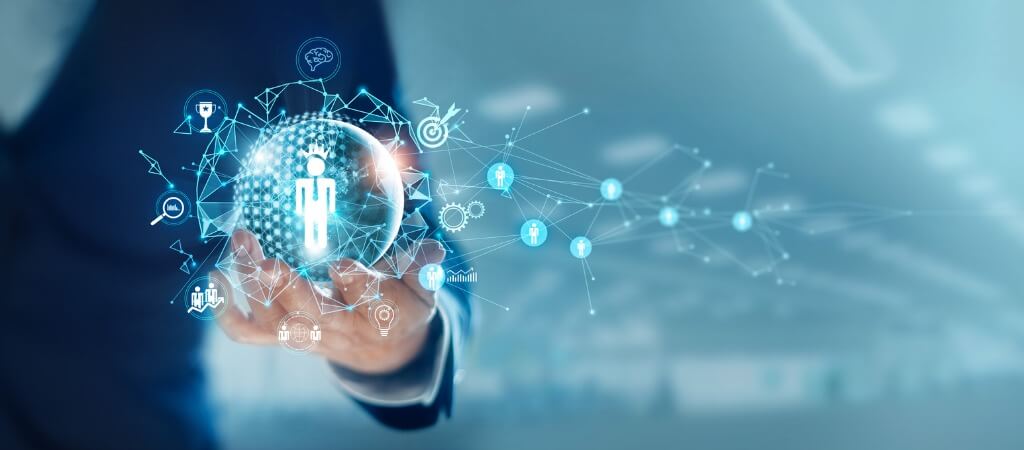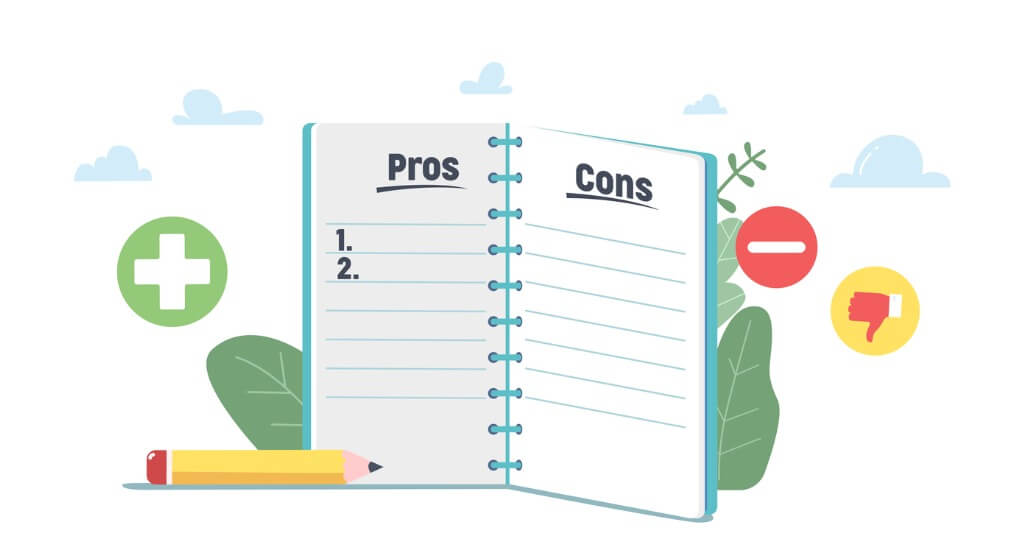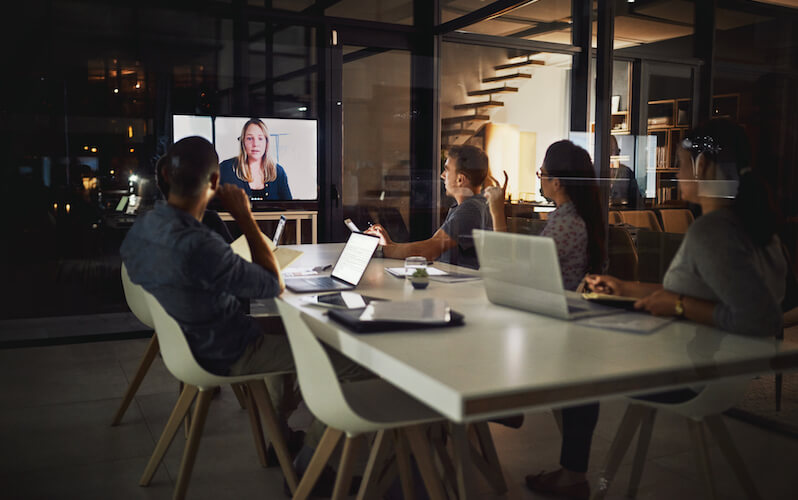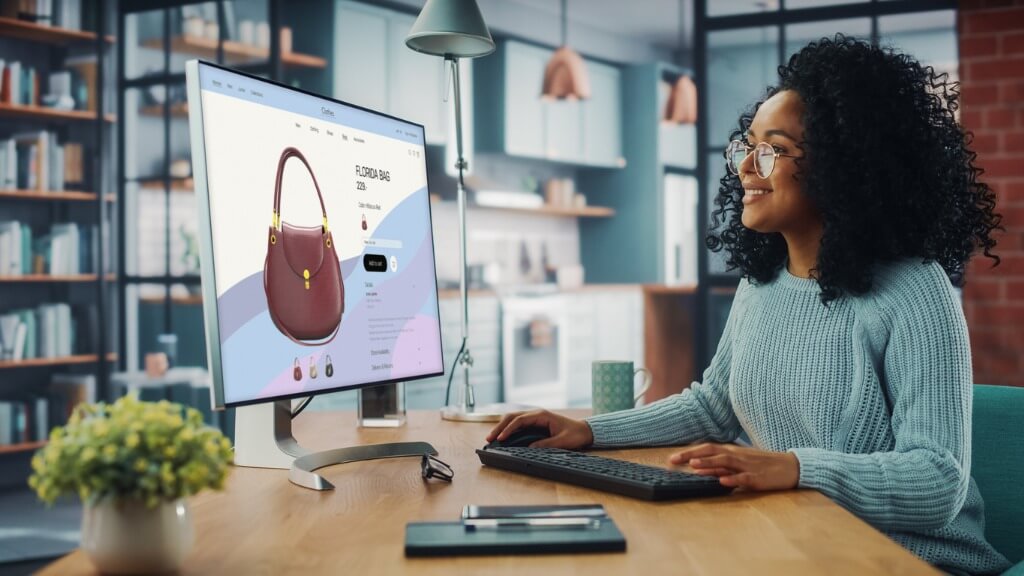What Is Marketing Automation? Tools & Best Practices
Marketing automation can be called many things…a necessary evil, a means to an end, the thing that keeps you up at night because it accidentally unsubscribed your entire audience. It’s one of the few pieces of software that modern marketing teams truly can’t live without. It enables marketing teams to save an exponential amount of time by automating routine tasks and triggered workflows in addition to allowing them to track and evaluate the performance of marketing campaigns.
And yet, 70% of marketers say marketing automation software is critical to their success. So what is it, anyway?
Jump to the Information You Need:
What is Marketing Automation?
Marketing automation is when marketers pass the burden of monotonous tasks to software logic to complete. Ideally, your team would define this process once, perform maintenance checkups, track the provided analytics, and take action on those insights.
Put another way, it’s an automated system that allows experienced marketing teams to deliver new customers without increasing employee requisites. Having a lean team is important to achieve company goals and function within budgetary constraints, especially in a startup mindset.
Looking to learn more about the best marketing automation tools? We have a wealth of reviews to help you find the options for you. Click below to start exploring!
Marketing Automation Benefits
There are many benefits of marketing automation, but the two biggest are that it gives marketing teams the ability:
- To automate routine tasks and actions in a triggered workflow
- To track the success of their campaigns across email and other channels and gather insights about campaign performance over time.
Over 35% of marketing automation users cite streamlining marketing and sales efforts as a top benefit of implementing marketing automation. (Ascend2 2021)
Traditionally, marketing campaigns were carried out mainly via email, sometimes including direct mail or phone calls as well. But nowadays, there is a range of other digital channels, such as text/SMS and social media, that support campaigns as well.
Common automation themes include outbound and inbound lead generation, campaign management, workflow automations, email sequences, reporting, and analytics. Some tools are set up for success in different channels like SMS, email, and social media, or are even native to applications.
A solid marketing automation solution will handle your tasks elegantly, but also provide insights around your campaigns. For example, email automation covers several useful KPIs. It includes things like:
- Open Rate
- Click-Through Rate
- Unsubscribe Rate
- Response Rate
- Bounce Rate
54% of marketers feel they are NOT using their marketing automation tool to their full potential. A further 26% are not sure. (Ascend2 2021)
What are the Most Important Marketing Automation Features?
Automated marketing began with the “email”. By sending emails to your customers and prospects based on a schedule or triggers, marketers could control the conversation and increase positive outcomes for sales. Tools like landing pages and segmentation can help you to build leads and drive interest to new visitors. Reporting and analytics features are crucial to know when and how a marketing resource resonates with your audience.
Social media campaigns will provide the direst of KPIs for your product and services. Marketers are keen on the customer lifecycle strategy and like to ensure that confidence is instilled at each checkpoint in the buyer journey. In the last decade, several sophisticated automation functions have been incorporated into websites, mobile apps, SMS/text, and social media.
Let’s shed some light on the range of features that cover the majority of the marketing stack. These following features roll into 5 categories:
- Email Marketing and Online Marketing
- Lead Management
- Reporting and Analytics
- Social Media
- Marketing Automation Integrations
1. Email Marketing & Digital Marketing Automation Features
This set of automation features enables marketers to build out emails and landing pages, and optimize their content format.
- Email Management: Automation for segmentation, A/B testing, scheduling, and auto-responders is key. Consider opt-in, unsubscribe, and bounce processing. (This could keep you from being black-listed).
65% of marketers are using automation for email marketing campaigns. This is by far the most automated form of marketing. (Ascend2 2021)
- Triggered Email: Send real-time, delayed-time, personalization on behavioral, and response-based outreach.
- Landing Pages: Unique Page visits, customized experiences are vital to success. Control customer experience and is well-known to increase conversion rates.
- Forms: Survey forms, validation, and scoring are viable based on answers. Sentiment analysis and categorization are evolving into marketing tools.
- Dynamic Content: Landing pages and selected interactions can trigger different results to appear within content placeholders.
The real value with email marketing is turning your top of the funnel leads and website visitors into marketing qualified leads for sales to close. The goal is to convert leads into long term satisfied customers.
Marketers are using automation 76% more than sales and 139% more than finance. (Hubspot 2021)
2. Lead Management Features
These features help evaluate the health of contacts in your database and identify which ones are ripe for the picking (so to speak).
- Lead Database: Email clicks, website visits, and scoring changes can all be automatically logged or triggered by outside sources connected to your CRM.
- Lead Nurturing: Emails can be triggered based on a predetermined campaign, and in a sequence that aligns with the customer’s purchase journey.
- Automated Sales Tasks: Automatically send follow-up messages based on specific behavior, create lists of qualified leads for sales, and alert salespeople of new action.
- Segmentation: Demographic, company information, and behavior-based filters refine the outreach process.
- Workflow Automation: Planning, calendar creation, and task assignment, status updates, and channel outreach can all be automated.
- Lead Scoring: Identify the best lead for a campaign or tactic. You can weigh important and undesirable behaviors automatically.
What good are all the automation tools in the world if you cannot track engagement, gauge results, and plan for your next campaign? Let’s cover the bases of Reporting and Analytics.
80% of marketing automation users saw an increase in the number of leads using marketing automation software. (Invesp 2021)
3. Reporting & Analytics Features
These features correspond directly to the second overall goal of marketing teams—to evaluate campaign and landing page performance and improve it over time.
- Basic Reporting: A summary of email KPIs and landing page views, form submits, clicks, scrolls, and heatmaps are often part of a smart dashboard.
- SEO & Keyword Tracking: Web pages typically hand you the tools to track keyword strength and compare your performance to market competitors. This could also include the relevance of your content and supporting backlinks
- Web Analytics: Determine which pages of your website are most popular with prospects. Look at bounce rate, common paths and more.
- Predictive Analytics and Machine Learning: Likely the most forward and innovative trend in data if making the most of feedback and form fill outs. To optimize future marketing operation, one must consider sentiment analysis for automated responses, smart surveys, and feedback loops, classifications, and recommendations.
With the ever-growing volume of social media platforms, there’s a rise in social listening and platform analytics, which we should pay close attention to as the market develops.
4. Social Marketing Automation Features
Social media has become an increasingly important marketing arena, and these set of features help teams create content for launch campaigns across social platforms.
- Social Campaigns: Social media is becoming connected across all platforms. Facebook, Instagram, website cookies, and retargeting campaigns are getting so specific that people encourage seeing relevant ads.
- Social Listening: Monitor brand mentions across the social sphere. Gain insight into prospect segmentation and campaign messaging.
- Social Sharing: Incorporate smart share buttons into campaign messages. Gain data about who shares content to which content and what drives social conversations.
The second most automated form of marketing is Social media marketing, with 47% of marketers reporting some form of automation. (Ascend2 2021)
- Social Engagement: Increase engagement with polls or referral programs. Some tools allow integration of engagement apps to your Facebook, email, and website.
- Social Analytics: Add tracking to social media campaigns, and improve your conversion rates for future campaigns.
Integrating with your existing CRM and outreach tools, such as email and scheduling software, means you can maximize the value you get from a marketing automation product.
5. Marketing Automation Integrations
Integration between your CRM and marketing automation software is critical to the success of your marketing department. Ensure that the tools you’re considering fit your ecosystem and tech stack. If you want to increase the chances for success and achieve a quick ROI, then consider what experts have to say about the propensity for success in your ecosystem.
52% of marketers say integrations are key when selecting a marketing automation platform. (Demand Spring 2021)
The data model should be consistent. Once you’re considering lead nurturing and lead scoring, the data has to be normalized and as tidy as possible. The quality of the marketing qualified leads that are passed to Sales depend on it.
Here are 3 things to consider when you’re evaluating an integration to your tech stack, API, and database:
- Automatic object mapping / object relational mapping vs. manually mapping data
- Live synchronization vs. batch uploading and synchronization
- Real-time vs. intervalic synchronization
Marketing automation software often works as a cornerstone for all team leads and operators. While vendors offer a growing number of integrations, it’s important for marketing team members to identify key features that will impact their team for positive results.
One marketing automation example iswhere for many B2B companies, webinars are a key tactic for qualifying leads, White papers and customer case studies lead to new customers. The possible integrations between marketing preferred vendors SaaS company solutions means the difference from ideation to actual success.
Choosing the Right Marketing Automation Software
Check out this table of key marketing automation requirements, brought to you by our buyers who have been through the process before. It will show you the essential areas to consider, and help you determine your minimum requirements.
| Feature Set | Ease of Use | Support |
|
|
|
| Training | Price | Adoption |
Training
|
Price
|
Adoption
|
Free Marketing Automation Platform Scorecard
We also have a free template for evaluating marketing automation vendors based on your selection criteria. It was compiled by Daniel Englebreston, an experienced marketing automation technologist. He’s an expert contributor to the TrustRadius community. Thanks, Daniel!
Use the scorecard to compare the products on your shortlist head-to-head. That way you can pick the right option for your organization based on your requirements. It includes an empty template for you to fill in, as well as an example scorecard for an evaluation of three leading marketing automation products.
Get your free copy of the template here.
Major factors to consider in purchasing marketing automation software include:
- Price
- Integration
- Usability
- Enterprise vs. simple SaaS
- Channel focus
- Documentation
- Support
Marketing leaders often have an affinity towards their favorite tools and select their stack with a fine comb. You’ll hear that integration with Salesforce marketplace is make-or-break, or that the organization is bootstrapped to Adobe tools. Frequently you will learn that your company has contracted a suite of tools through Oracle, so while you might want to work with a past platform you are tied into a network of options.
65% of marketers feel their marketing automation strategy is ‘extremely effective’ or ‘very effective’. (Hubspot 2021)
The important thing is to comb over the details by reviewing the entire suite of tools at your disposal, while making sure that it meets your marketing teams’ needs as well. Let’s take a look at what experienced users had to say about a few of the best marketing automation tools.
Adobe Marketo
“Marketo plays a central role in our company, and we integrate with several other Adobe products. The engagement platform allows you to communicate, track, and report on prospects to customers holistically across their journey. Our entire lead flow runs through Marketo along with many other channels of our business. We have almost 100 active users across our org that are actively creating campaigns, assets, reports and other elements to help grow our company.”
Alex Greger | Martech Solutions Architect | DemandLab
Oracle Marketing
“We use Oracle Marketing to support direct messaging for the revenue administration. It is used within the Contact Centre and by the Communication team. We were very low on engagement with customers as the bulk of our messages was through public notices put on either in newspapers or through advertisements on TV. Our messages lacked a personal touch and were generic, which means there was little response when there was action required from the customer.”
Sheila Mugusia | Chief Manager Customer Experience | Kenya Revenue Authority
HubSpot
“HubSpot was originally only used for marketing, but this year has been implemented across sales as well so most of the organization uses the tool. We have been able to use HubSpot for our marketing needs, including social media, email marketing, blogging, and landing pages. The campaign feature allows me to track everything involved with a specific campaign, which makes it easier to quickly show the impact the campaign has had on our marketing efforts without having to try to gather all the information.”
Heather Robinette, MBA | Marketing Manager | Conexlink
Which Marketing Automation Tools Will Meet Your Needs Best?
Now that we’ve outlined the basic features and capabilities for marketing automation software, it’s time to figure out which products should be on your shortlist.
The chart below asks a series of seven questions to help you figure out which products are best suited for your specific circumstances and use cases.

Marketing Automation’s Future
Marketing automation is evolving rapidly, driven by AI, data intelligence, and growing competition. The future is clear: smarter, predictive, and deeply personalized. Businesses that embrace these innovations will stay ahead—while those relying on outdated tactics risk being ignored. Here’s what to expect in the years ahead.
1. Hyper-Personalization with AI
Automation is moving beyond mass emails. AI-driven tools will refine targeting by analyzing intent data, demographics, and behaviors. Expect marketing messages that feel almost intuitive—anticipating needs before customers even express them.
2. A Crowded, Evolving Market
With marketing automation delivering high ROI, more vendors are entering the space. Future platforms will consolidate capabilities, blending email, CRM, SMS, and lead management into unified solutions. Choosing the right tool will become more complex, requiring businesses to prioritize integrations and AI-driven analytics.
The global marketing automation market is projected to reach $14.18 billion in 2030. (Research and Markets 2021)
Want to Learn More About Selecting the Best Marketing Automation Tool for Tour Team?
If you’re seeking out the right tools for your marketing team, TrustRadius can help to narrow down your search. We have a wealth of reviews to help you find the best marketing automation tools for you. Click below to start exploring!
Marketing Automation: Sources
- B2B Content Marketing 2019 (Content Marketing Institute 2019)
- Marketing Automation Platform Insights (Demand Spring 2021)
- The Ultimate Marketing Automation stats (mailmonday 2022)
- Marketing Automation Market Research Report (Research and Markets 2021)
- Not Another State of Marketing Report (Hubspot 2021)
- The Rise of Marketing Automation (Invesp 2021)
- The State of Marketing Automation (Ascend2 2021)












